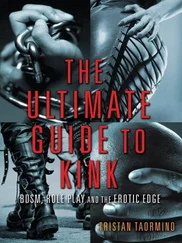Although there were never more than a dozen such “licensed” outlets at any one time, transvestite entertainment palaces and cabarets quickly revamped the city’s boastful “Once in Berlin” nightlife. And since straight tourists were usually cherished customers, transvestite clubs appropriated the hard-currency draw of less humble and physically insecure posts of “divine decadence.” Hotel brochures, tourist guidebooks, even intellectual monthlies promoted the major drag clubs, and in return received substantial advertising. The Nationalist, middle-of-the-road, and Catholic political parties, of course, raged. Again the greatest opponents of the clubs were Berlin’s militant gay organizations and societies, who found them so distasteful and degenerate that not one male homosexual publication ever accepted a paid ad from them.
On the other hand, many hip Berliners and foreign tourists wrote admiringly about the transvestite vestibules. Typical description of the hotsy-totsy “Eldorado” from a Berliner: “You’d see always famous people there, like Max Pallenberg. Not much of a show, but the most fascinating thing was … you had lesbians looking like lesbians with short hair, lesbians looking like beautiful women, lesbians dressed exactly like men and looking like men. You had men dressed like women so you couldn’t possibly recognize they were men, it was so realistic. Then you would see couples dancing and you wouldn’t know any more what it was.” (quoted from Mankoff’s Lusty Europe ).
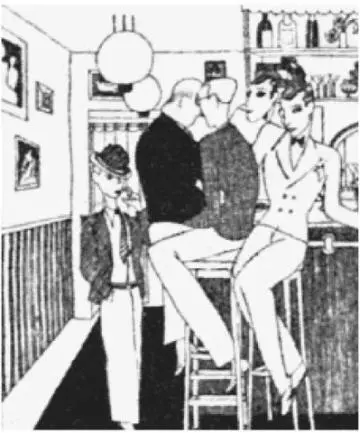
Melchior, Meyer-Stube
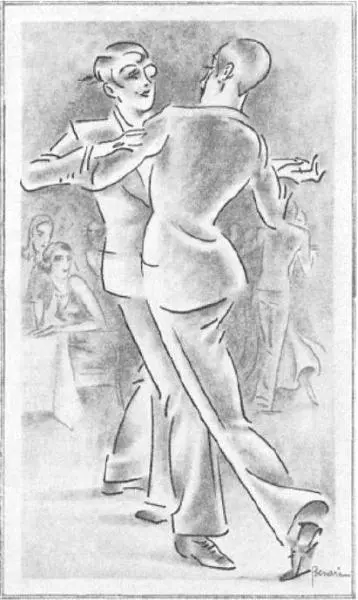
Benari, Eldorado Dancers
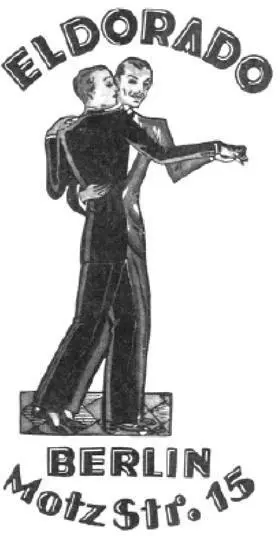
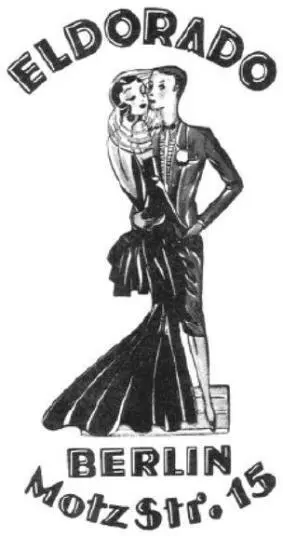
New Eldorado wine cards
Among Rumpelstilzchen’s many journalistic gimmicks was his annual fall Bummel , where he accompanied his fuddy-duddy uncle from the sticks to some bizarre or naughty Berlin institution. In September 1931, the roguish, Schnauze columnist brought Uncle Artur to the Eldorado at midnight. Artur, of course, got everything wrong but Rumpelstilzchen understood the old man’s otherworldly enchantment with the place. Leaning between the club’s backroom columns were the Eldorado’s stunning males in drag. To the provincial Artur, they resembled nothing so much as pale princesses out of children’s storybooks. The raucous atmosphere of gender confusion, for one guileless German, had crossed over into the realm of poetic theatre.
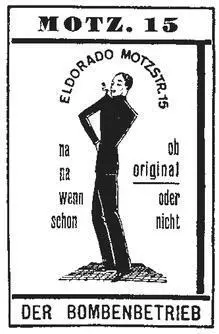
American Vogue also attempted a sendup of Berlin’s transvestite clubs. For their May 1932 issue, a reporter scoured the city in search of Berlin’s single most perfect female. Starting with the grand hotel lobbies, the voyeuristic safari took the writer through an assortment of chi-chi cafés and Pleasure Palaces. Using a beauty chronometer that rated everything from up-to-date shoe accessories to ideal nose length, Vogue ’s travel specialist failed to detect a stylish Berlinerin worthy of the title. Then, at the suggestion of a local, he took a chance at the old Eldorado, where a non-biological femme finally complied with the American’s exacting requirements.
Vogue did not know it but, by the time their sardonic piece was published, Berlin’s drag Dielen had already been banned and shuttered. The growing Nazi and Nationalist menace nationwide began to affect the Berlin social climate.
In March 1932, the city’s frightened liberal vice establishment declared male transvestite nightclubs an affront to public morality and, under Paragraph 168, used their authority to close them permanently. Seven months later, the Nazis made a poignant effort of transforming the Eldorado on Motzstrasse into one of their district electoral headquarters. It was as if a desecrated Nordic temple had been thoroughly cleansed of polluted influences and re-sanctified for the virtuous torch-bearers of Adolf Hitler’s New Germany.■
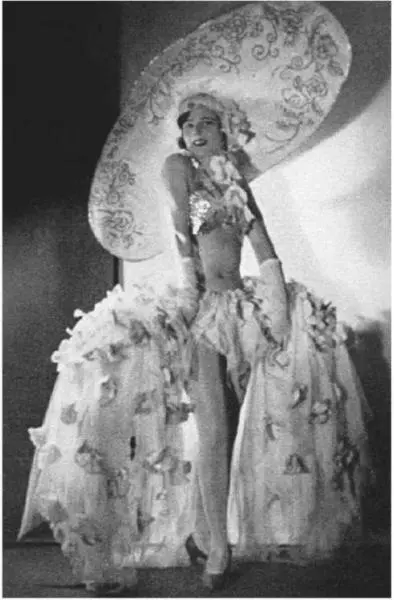
Muguette
I have just come back from the Land of the Naked, where men, women, children, oldsters, fathers and mothers of families, virgins and adolescents come and go quite nude, where they bathe, laugh, eat, drink and cook their meals, in a state of total, stark, utter nakedness. Do not go and search for this earthly paradise at the Antipodes. It is situated at a distance of twenty hours from Paris. In the very heart of Europe, in Germany, to be exact.
Louis-Charles Royer,
Let’s Go Naked , 1932
“MORE SUN + MORE AIR + MORE NUDITY = MORE LIFE!”
Berlin Naturalist Slogan, 1926
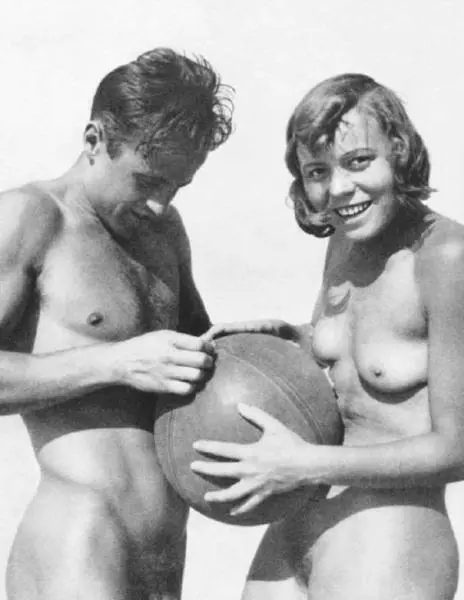
Modern nudism, or Nacktkultur , developed into a mass German movement shortly after the Armistice and continued well into the Nazi era. Like many Central European social innovations, it fused modernist and reactionary beliefs in such a way that it defied easy definition and appealed to people on the political fringes who had little else in common. Hirsute revolutionaries, primitive Christians, Aryan mystics, middle-of-the-road Socialists, free-thinkers, Nationalist academics, health fanatics, eye-fluttering gurus, unrepentant feminists, pseudo-Buddhists, and flat-out hedonists all joined arms to promote the cult of the naked human body.
The peripatetic leaders and theoreticians of the Nacktkultur program adroitly stitched together a dedicated underground community of “Life Reformists” and visionary utopians from Germany’s disaffected. Their web extended everywhere. It was particularly strong in Northern Germany, where several dozen nudist sites and colonies dotted the North and Baltic Sea coastlines. By 1931, even land-locked Berlin had some 40 competing Nacktkultur societies and clubs.
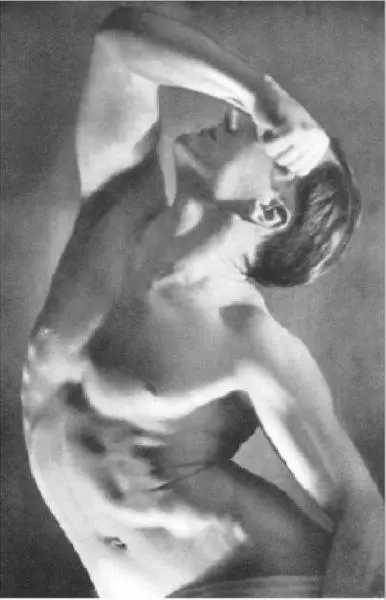
Member of Artur Fuchs’ Nationalist FKK
GERMAN NUDIST AND LIFE REFORM MAGAZINES
Die Aufklärung (“The Enlightenment”), “a Monthly Journal for Sex and Life Reform.” Edited by Magnus Hirschfeld and Maria Krishe from the Institute for Sexology. An upbeat zine designed in a pop/Bauhaus format, it mixed enthusiasm for Nacktkultur with sexological exposés and anthropological/historical material. Supportive of Adolf Koch’s “Free Men, Union for Socialist Life Reform” and sympathetic to homosexual and lesbian aspects of nudism. [1929-1931]
Der Eheberater (“The Marriage Counselor”), a “Monthly for Hygienic People’s Instruction.” A women’s magazine that promoted nudism, natural medicine, graphology, and sexy fashions. Interesting advice columns. [1928].
Читать дальше











